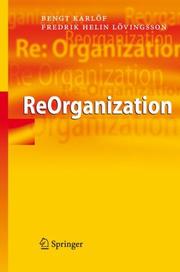| Listing 1 - 5 of 5 |
Sort by
|
Book
ISBN: 1424414385 1424414393 1509084711 9781424414390 Year: 2007 Publisher: [Place of publication not identified] I E E E
Abstract | Keywords | Export | Availability | Bookmark
 Loading...
Loading...Choose an application
- Reference Manager
- EndNote
- RefWorks (Direct export to RefWorks)
This course is based on the dozen nontechnical soft skills covered in Carl's book "Stuff you Don't Learn in Engineering School: Skills for Success in the Real World" (Wiley-IEEE Press; 2004). Perhaps the best single overview of the content ... a quote from Tom O'Neill, CEO of Parsons Brinckerhoff, on his giving the book to Dartmouth's 150 engineering graduates in 2005: "It is a good, useful publication about something that I believe very strongly. I was happy to see that someone has written a book about something that should be a fundamental precept for success in the world of engineering, and I was happy to share it with some young people who will shape the world for the next 40 years." These materials are designed to help younger engineers and emerging project managers -- indeed, engineers in all disciplines and all professionals -- learn the soft skills that are important to be more effective and happier in the real world.
Project management. --- Oral communication. --- Tutorials. --- Speech. --- Writing. --- Engineering management. --- Engineering profession. --- Oral transmission --- Speech communication --- Verbal communication --- Communication --- Industrial project management --- Management

ISBN: 1280805269 9786610805266 3540332731 3540332723 3642069924 Year: 2007 Publisher: Berlin ; New York : Springer,
Abstract | Keywords | Export | Availability | Bookmark
 Loading...
Loading...Choose an application
- Reference Manager
- EndNote
- RefWorks (Direct export to RefWorks)
ReOrganization has been written as a practical guide for anyone faced with organizing a business. Because every organization situation is unique, the reader should be familiar with a number of conceptual models and tools which can be of help when creating a theory for a particular situation. As consultants and businessmen, as well as through the elaboration of certain methods, the authors have developed a sense of what is important in the work of shaping or redesigning an organization. This book will therefore be of interest to anyone on the point of realising a development in their organization and wishing to know how this can best be accomplished most effectively and successfully.
Corporate reorganizations. --- Reengineering (Management) --- Organizational change. --- Business process reengineering --- Re-engineering (Management) --- Management --- Corporations --- Reorganization of corporations --- Industrial management --- Consolidation and merger of corporations --- Change, Organizational --- Organization development --- Organizational development --- Organizational innovation --- Organization --- Manpower planning --- Reorganization --- Organization. --- Management. --- Administration --- Industrial relations --- Organisation --- Planning. --- Creation (Literary, artistic, etc.) --- Executive ability

ISBN: 0262513463 0262220792 9786612100901 0262257130 1282100904 1429460970 9780262257138 9780262513463 0262299976 9781282100909 9781429460972 9780262220798 9780262299978 6612100907 Year: 2007 Publisher: Cambridge, Mass. : MIT Press,
Abstract | Keywords | Export | Availability | Bookmark
 Loading...
Loading...Choose an application
- Reference Manager
- EndNote
- RefWorks (Direct export to RefWorks)
Distributed business component computing--the assembling of business components into electronic business processes, which interact via the Internet--caters to a new breed of enterprise systems that are flexible, relatively easy to maintain and upgrade to accommodate new business processes, and relatively simple to integrate with other enterprise systems. Companies with unwieldy, large, and heterogeneous inherited information systems--known as legacy systems--find it extremely difficult to align their old systems with novel business processes. Legacy systems are not only tightly intertwined with existing business processes and procedures but also have a brittle architecture after years of ad-hoc fixes and offer limited openness to other systems. In this book, Willem-Jan van den Heuvel provides a methodological framework that offers pragmatic techniques for aligning component-based business processes and legacy systems. Van den Heuvel's methodology is based on three building blocks: reverse engineering, which allows legacy systems to be componentized; forward engineering, which derives a set of business components from requirements of the new business processes; and alignment of new business processes and componentized legacy systems. Van den Heuvel provides a theoretical foundation for these, with chapters that discuss component-based development, introduce a case study that is used throughout the book to illustrate the methodology, and assess methods and technologies for legacy integration, component adaptation, and process alignment. He describes the methodological framework itself and its techniques to align new business processes with legacy systems by adopting a meet-in-the-middle strategy. Drawing on topics from a wide range of disciplines, including component-based development, distributed computing, business process modeling, and others, Aligning Modern Business Processes and Legacy Systems offers theoretically grounded practical methodology that has been explored and tested in a variety of experiments as well as some real-world projects.
Management information systems --- Information technology --- Reengineering (Management) --- Electrical & Computer Engineering --- Engineering & Applied Sciences --- Information Technology --- Management information systems. --- Information technology. --- Computer-based information systems --- EIS (Information systems) --- Executive information systems --- MIS (Information systems) --- Business process reengineering --- Re-engineering (Management) --- IT (Information technology) --- Sociotechnical systems --- Information resources management --- Management --- Technology --- Telematics --- Information superhighway --- Knowledge management --- Communication systems --- INFORMATION SCIENCE/Technology & Policy --- Information systems

ISBN: 0080481558 9780080481555 0123706084 9780123706089 128105061X 9781281050618 9786611050610 6611050612 Year: 2007 Publisher: Amsterdam ; Boston : Elsevier/Morgan Kaufman,
Abstract | Keywords | Export | Availability | Bookmark
 Loading...
Loading...Choose an application
- Reference Manager
- EndNote
- RefWorks (Direct export to RefWorks)
Intended for both the student and the practitioner, this is the first user-centered design casebook. It follows the Harvard Case study method, where the reader is placed in the role of the decision-maker in a real-life professional situation. In this book, the reader is asked to perform analysis of dozens of UCD work situations and propose solutions for the problem set. The problems posed in the cases cover a wide variety of key tasks and issues facing practitioners today, including those that are related to organizational/managerial topics, UCD methods and processes, and technical/ pr
Business policy --- Consumer behavior --- Customer relations --- Management information systems --- New products --- Reengineering (Management) --- User interfaces (Computer systems) --- Management --- Business process reengineering --- Re-engineering (Management) --- Interfaces, User (Computer systems) --- Human-machine systems --- Human-computer interaction --- Business --- Public relations --- Consumer affairs departments --- Customer advisory boards --- Relationship marketing --- New product development --- NPD (Marketing) --- Product development --- Products, New --- Commercial products --- Industrial design

ISBN: 3642092640 3540735216 3540735224 Year: 2007 Publisher: Berlin, Heidelberg : Springer Berlin Heidelberg : Imprint: Springer,
Abstract | Keywords | Export | Availability | Bookmark
 Loading...
Loading...Choose an application
- Reference Manager
- EndNote
- RefWorks (Direct export to RefWorks)
Business process management is usually treated from two different perspectives: business administration and computer science. While business administration professionals tend to consider information technology as a subordinate aspect for experts to handle, by contrast computer scientists often consider business goals and organizational regulations as terms that do not deserve much thought but require the appropriate level of abstraction. Mathias Weske argues that the communities involved need to share a common understanding of the principles underlying business process management. To this end, he develops an overall picture that describes core BPM concepts and technologies and explains their relationships. This picture covers high-level business aspects like business goals, strategies, and value chains, but it concentrates on process modeling techniques and process enactment platforms, taking into account the different stakeholders involved. After starting with a presentation of general foundations, process orchestrations and process choreographies are covered. Based on control flow patterns, concrete process languages are introduced in a concise manner, including Workflow nets, Event-driven Process Chains, Yet Another Workflow Language, and the Business Process Modeling Notation. The various stages during the design and implementation of process choreographies are discussed. Different soundness properties are investigated in a chapter on formal aspects of business processes. Finally, he investigates concrete architectures to enact business processes, including workflow management architectures, case handling architectures and service-oriented architectures. He also shows how standards like SOAP, WSDL, and BPEL fit into the picture. This textbook is ideally suited for classes on business process management, information systems architecture, and workflow management. It is also valuable for project managers and IT professionals working in business process management, since it provides a vendor-independent view on the topic. The accompanying website www.bpm-book.com contains further information, such as links to references that are available online, exercises that offer the reader a deeper involvement with the topics addressed, and additional teaching material.
Business process management. --- Industrial management. --- Information technology -- Management. --- Management information systems. --- Reengineering (Management). --- Workflow -- Management. --- Industrial management --- Management information systems --- Workflow --- Reengineering (Management) --- Information technology --- Applied Mathematics --- Computer Science --- Industrial & Management Engineering --- Management Styles & Communication --- Management --- Mechanical Engineering --- Engineering & Applied Sciences --- Business & Economics --- Management. --- Business process management --- Business process reengineering --- Re-engineering (Management) --- Computer-based information systems --- EIS (Information systems) --- Executive information systems --- MIS (Information systems) --- Business administration --- Business enterprises --- Business management --- Corporate management --- Corporations --- Industrial administration --- Management, Industrial --- Rationalization of industry --- Scientific management --- Computer science. --- Information technology. --- Business --- Software engineering. --- Application software. --- E-commerce. --- Computer Science. --- Computer Appl. in Administrative Data Processing. --- IT in Business. --- Information Systems Applications (incl. Internet). --- e-Commerce/e-business. --- Software Engineering. --- Data processing. --- Sociotechnical systems --- Information resources management --- Industrial organization --- Communication systems --- Information systems. --- Computer software engineering --- Engineering --- IT (Information technology) --- Technology --- Telematics --- Information superhighway --- Knowledge management --- Business—Data processing. --- Cybercommerce --- E-business --- E-commerce --- E-tailing --- eBusiness --- eCommerce --- Electronic business --- Internet commerce --- Internet retailing --- Online commerce --- Web retailing --- Commerce --- Application computer programs --- Application computer software --- Applications software --- Apps (Computer software) --- Computer software --- Electronic commerce.
| Listing 1 - 5 of 5 |
Sort by
|

 Search
Search Feedback
Feedback About UniCat
About UniCat  Help
Help News
News